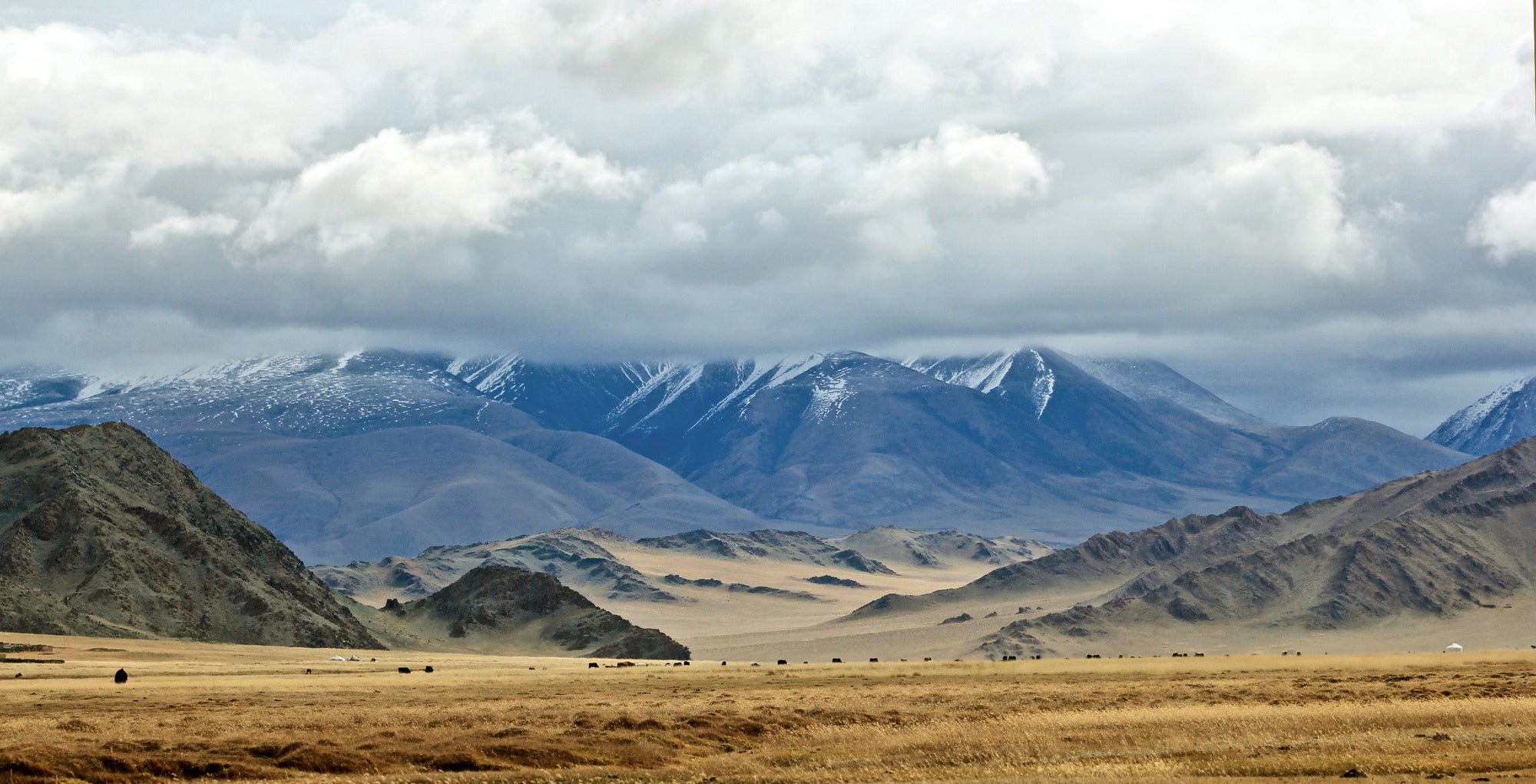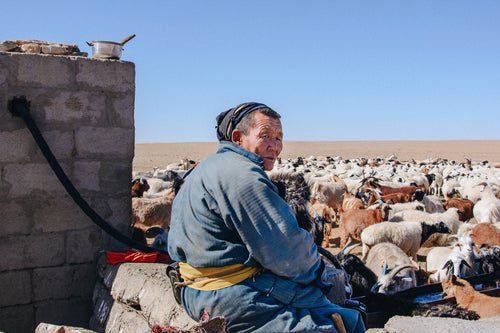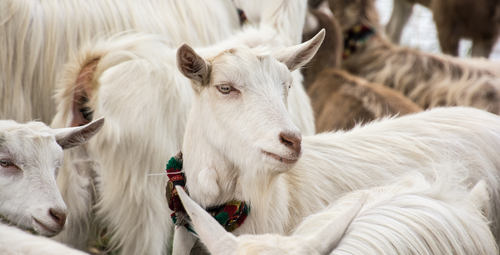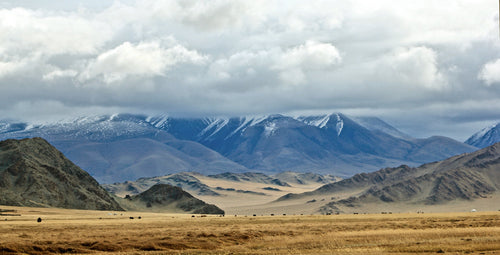Mongolia: A History of Cashmere

Cashmere, a luxury fiber with softness and warmth, has been highly coveted throughout history. Mongolia is known to be one of the world's largest producers of cashmere, where the fiber has been an integral part of the country's culture and economy for centuries.
The history of cashmere in Mongolia dates back to the country's nomadic past. Mongolian nomads have been breeding cashmere goats for their wool for more than 1,000 years. These goats are well-suited for the harsh climate of Mongolia, where temperatures can drop to -40°C (-40°F) in winter. Cashmere goats produce a fine, soft wool that is highly valued for its warmth and insulation properties, making it a valuable commodity in a cold and rugged environment.
The Mongolian cashmere industry really began to take off in the early 19th century, when trade with China and Russia brought an influx of demand for the soft fiber. The cashmere trade allowed Mongolian nomads to supplement their income, and the fiber became an important part of the country's economy. However, the industry was largely unregulated and suffered from a lack of quality control, with many traders buying up low-quality cashmere at low prices.
In the mid-20th century, the Mongolian government took steps to regulate and modernize the cashmere industry. They created cooperatives to help nomads organize and sell their cashmere, and established quality standards to ensure that only high-quality fiber was exported. These measures led to a significant increase in the value of Mongolian cashmere, and the industry began to thrive.
Today, Mongolia is one of the world's largest producers of cashmere, accounting for around a third of global production. The country's cashmere industry supports around 100,000 herders, and provides a significant portion of Mongolia's export revenue. Cashmere has also become an important part of the country's cultural heritage, with many traditional Mongolian garments made from the soft fiber.
Despite its success, the Mongolian cashmere industry faces a number of challenges. Climate change is leading to more frequent and severe weather events, which can harm cashmere goats and disrupt the industry. In addition, the industry is still largely dependent on exports to China, which can lead to volatility in prices and demand.
To address these challenges, the Mongolian government and the cashmere industry are working to promote sustainable practices and increase local production and processing of cashmere. Efforts are also being made to promote the value of Mongolian cashmere in international markets, and to develop new products and markets for the fiber.
The history of cashmere in Mongolia is a fascinating tale of a luxury fiber that has become an integral part of the country's culture and economy. From its origins in the nomadic past to its modern-day importance as a global commodity, cashmere has played a significant role in the lives of the Mongolian people. While the industry faces challenges, the future of Mongolian cashmere looks bright, as efforts are made to promote sustainability and innovation in this vital sector.

Sustainability
arch4 cashmere is traceable and responsibly sourced. Our process is certified by the Global Organ...
Baby Goat Cashmere: Soft Gold
This superior, and incredibly special yarn comes from rare fibres found in the undercoat of baby...